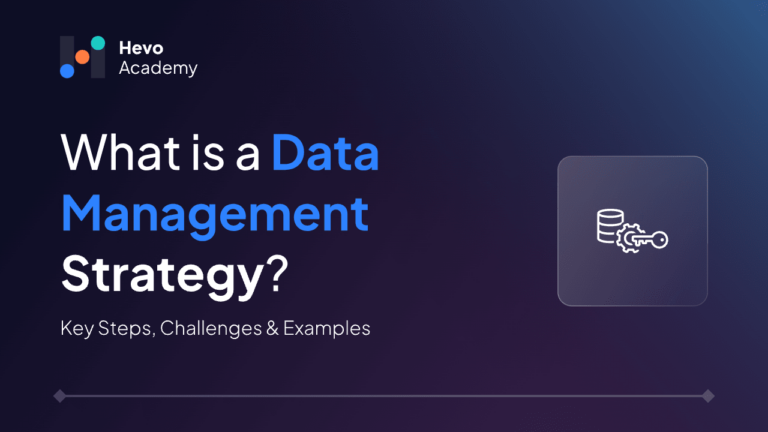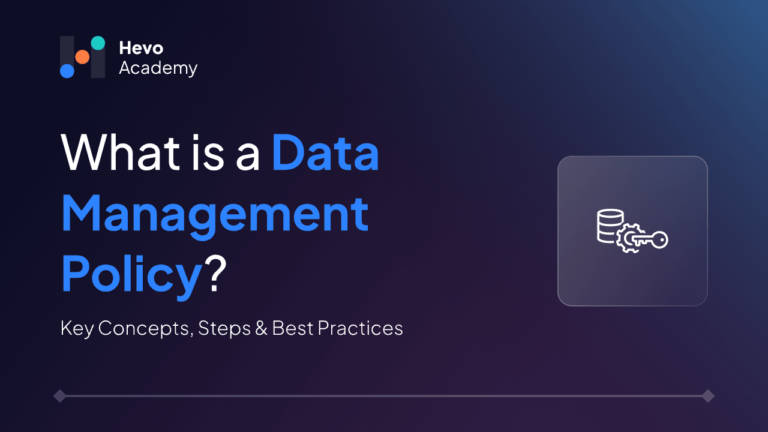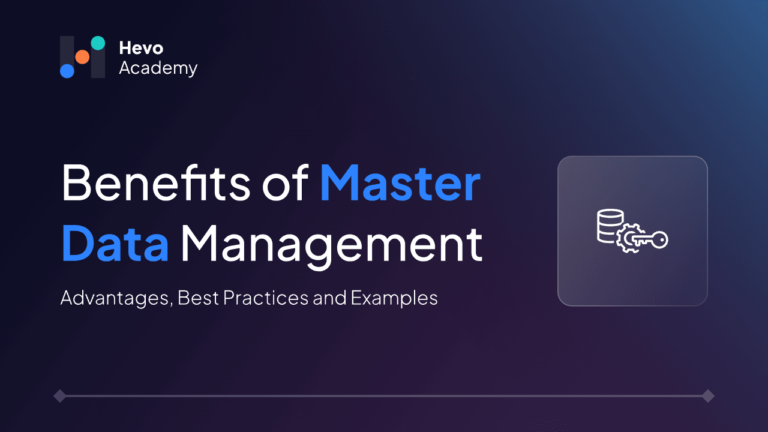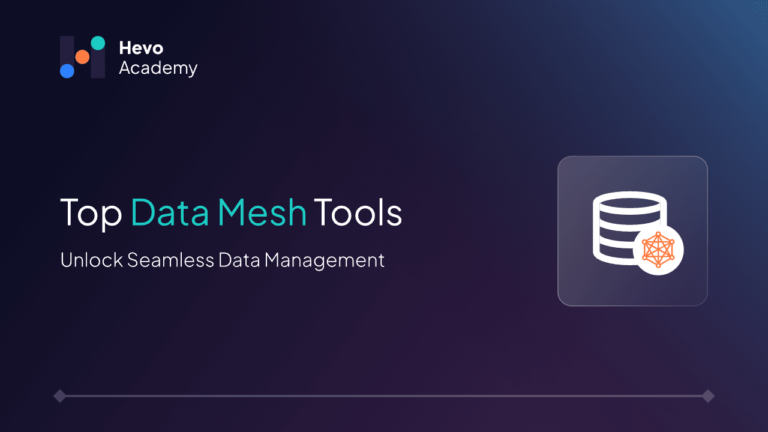Be it enhanced decision-making, improved operational efficiency, or regulatory compliance, a data management strategy could provide a structured approach to govern and harmonize critical data assets. At its core, this strategy ensures that your organization has access to accurate, consistent, and up-to-date information, empowering you with the tools to make informed decisions and drive business growth. By implementing a data management strategy, you gain the ability to eliminate data silos, streamline processes, and foster collaboration across departments.
Table of Contents
But here’s the big question:
- What does a strong data process really look like?
- How can you ensure your organization is leveraging its data to its fullest potential?
In this article, we’ll explore how you can master data management strategy to help you achieve these strong data process and more.
Why Is a Data Management Strategy Important?
As a data organization, you’ve likely found yourself repeatedly answering questions like:
- Why is our data inconsistent across teams and systems?
- Why does it take so long to get accurate insights for decision-making?
- How can we ensure compliance with ever-evolving data regulations?
These recurring questions are a clear sign that your organization lacks an effective strategy for data management. Without one, managing data becomes chaotic, leading to inefficiencies, inaccuracies, and missed opportunities.
You need a data management strategy to address these challenges head-on:
- To ensure data consistency, so everyone in your organization works with the same accurate and reliable information.
- Enable faster, smarter decisions, by centralizing and organizing your data for seamless analysis and reporting.
- To ensure compliance with regulations, by establishing clear processes for secure and lawful data handling.
Without a clear strategy to manage this data, it becomes fragmented, unreliable, and ultimately unusable. This is where a strategy crafted for your unique data management requirements acts as the foundation for your entire data ecosystem. It ensures that your data is well-organized, accessible, and trustworthy—helping your organization work smarter, make better decisions, and achieve long-term success.
It improves efficiency by eliminating duplicate data, enhances decision-making with consistent data insights, fosters collaboration with a single source of truth, ensures compliance with standardized data management processes, and provides a competitive edge through high-quality data.
Stages of the Data Lifecycle

Each stage of the data lifecycle is interconnected, with each playing a significant role so data remains valuable and usable throughout its existence. This emphasizes the importance of a comprehensive data management strategy. Here are the key stages:
- Data Creation: Data is generated from various sources such as transactions, user inputs, or sensors. Accuracy here sets the foundation for quality data.
- Data Storage: Data is stored securely and efficiently, ensuring easy access and retrieval while keeping its integrity intact.
- Data Usage: Data is analyzed and used for decision-making, turning raw data into valuable insights for business strategies.
- Data Sharing: Data is shared across departments, promoting collaboration and consistency by ensuring everyone works with the same information.
- Data Archiving: Older data, though not actively used, is preserved for future reference or compliance purposes.
- Data Deletion: When data is no longer needed, it’s securely deleted to minimize risks and comply with data protection regulations.
Key Steps to Create a Data Management Strategy
If your organization constantly battles inconsistent data, spends hours reconciling reports, and struggles to meet compliance requirements, it is wasting resources and hindering growth. A well-structured strategy for your data management can turn these obstacles into opportunities.
Let’s break down each key step so you can streamline processes, enhance decision-making, and ensure data integrity:
1. Identify Your Business Objectives
- This step involves clearly defining what your organization aims to achieve with its data. It sets the direction for all subsequent data management efforts.
- The benefits: Establishing clear objectives ensures that your data management efforts align with your organization’s overall goals, making data more relevant and actionable.
How to do it?
- Gather input from key stakeholders across different departments to understand their needs and expectations. Ask questions like:
- What goals do we want to accomplish?
- What insights do we need to drive our strategies?
Tip: Make your objectives specific and measurable. For example, instead of saying “improve customer satisfaction,” aim for “increase customer satisfaction scores by 15% in the next quarter.”
2. Create a Strong Data Process
This step consists of several sub-steps that work together so you can achieve mastery over your data management:
Collecting Data
- Identify the sources of data and establish methods for gathering it.
- The benefits: A well-defined collection process ensures that you gather relevant and high-quality data right from the start.
How to do it?
- Determine whether you need structured data (like databases) or unstructured data (like social media posts) and decide how you will collect it—manually or automatically through tools.
Tip: Regularly review your data sources to ensure they remain current and valuable; this helps avoid reliance on outdated information.
Preparing Data
- This stage focuses on cleaning and organizing the collected data for analysis.
- The benefits: Clean and organized data improves the reliability of insights derived from analysis, leading to better decision-making.
How to do it?
- Implement processes for validating and cleansing your data to remove inaccuracies or duplicates. Use tools that automate this process whenever possible.
Tip: Schedule regular audits of your data to maintain quality over time; this can help catch issues before they escalate.
Storing Data
- Choosing the best storage solutions for your organization’s data.
- The benefits: Proper storage ensures easy access while maintaining the security and integrity of your data.
How to do it?
- Evaluate different storage options like cloud solutions or on-premises systems based on your organization’s needs, budget, and security requirements.
Tip: Implement a backup strategy to protect against data loss; regular backups can save you from significant setbacks in case of system failures.
Analyzing and Distributing Data
- This step involves analyzing prepared data and sharing insights with relevant stakeholders.
- The benefits: Effective analysis leads to informed decision-making across the organization, enabling teams to act quickly based on accurate information.
How to do it?
- Utilize analytics tools to derive meaningful insights from your data and create reports that are easy for users to understand.
Tip: Encourage feedback on reports from users; their insights can help refine future analyses and improve clarity.
3. Find the Right Technology
- Selecting tools and technologies that will support your data management processes effectively.
- The benefits: The right technology enhances efficiency in managing, analyzing, and reporting on your data, making processes smoother for everyone involved.
How to do it?
- Research various software solutions that fit your organization’s specific needs. Consider factors like ease of use, scalability, and integration capabilities with existing systems.
Tip: Take advantage of trial versions of software before committing; this allows you to assess whether they meet your requirements without financial risk.
4. Establish Data Governance
- Creating policies and procedures for managing data effectively within the organization.
- The benefits: Strong data governance ensures accountability and compliance with regulations and maintains the integrity of your data assets.
How to do it?
- Define roles, responsibilities, and standards for how data should be used, maintained, and protected across the organization. Form a governance council, if necessary, to oversee these efforts.
Tip: Regularly review governance policies to ensure they remain relevant; adapt them as necessary based on changes in regulations or business needs.
5. Train and Execute
- Educate staff on new processes and technologies related to data management.
- The benefits: Well-trained employees are more likely to adhere to new processes, leading to better overall data management practices across the organization.
How to do it?
- Develop comprehensive training programs tailored to different roles within the organization. Focus on how employees can effectively use and manage data in their daily tasks.
Tip: Provide ongoing training sessions as new tools or processes are introduced; this keeps everyone updated and engaged with best practices in data management.
Challenges Faced During Management of Data
When advancing toward a resilient strategy for your data management or establishing effective data management processes, certain challenges may surface. Below, we discuss five common challenges and how to tackle them effectively:
- Data Quality Issues: Inconsistent or inaccurate data can lead to poor decision-making.
- Tip: Regularly audit and cleanse your data to maintain high quality. Read about data quality monitoring to avoid risks of poor data quality.
- Data Silos: Different departments may store data in isolated systems, hindering collaboration.
- Tip: Implement integrated systems that allow for seamless data sharing across teams.
- Compliance and Security Risks: Keeping up with data protection regulations can be challenging.
- Tip: Establish clear governance policies and conduct regular compliance training for staff.
- Lack of Skilled Personnel: Insufficient expertise in data management can impede progress.
- Tip: Invest in training programs and consider hiring experienced data professionals.
- Resistance to Change: Employees may be hesitant to adopt new data management practices.
- Tip: Foster a culture of openness by communicating the benefits of the new strategy and involving staff in the process.
Boost decision-making with strong data management practices that prioritize data integrity and efficiency.
Example of Implementing Data Management Strategy
Below, we talk about two scenarios illustrating how organizations faced challenges and successfully implemented data management strategies to overcome them.
Scenario 1: Retail Company Struggling with Customer Data Consistency
- The Challenge: A retail company had issues with inconsistent customer data across different sales channels. This inconsistency resulted in inaccurate marketing campaigns, poor customer experiences, and difficulties in inventory management.
- The Implementation: To address this, the organization focused on the data preparation stage where they standardized customer information from all sources, such as online orders, in-store purchases, and customer service interactions. They used automated tools to identify and eliminate duplicates and correct inaccuracies.
As a result, a single, accurate source of customer data, improving marketing efforts, customer service, and inventory management.
Scenario 2: Financial Institution Facing Compliance Issues
- The Challenge: A financial institution struggled to meet regulatory requirements due to fragmented data across multiple systems, making it hard to generate accurate compliance reports.
- The Implementation: The organization focused on establishing data governance by creating clear policies regarding data ownership, access controls, and compliance requirements. A governance council was formed to oversee these policies and ensure adherence across all departments. As a result, the institution was able to consolidate its data into a centralized repository, improving compliance, report accuracy, and response to regulatory inquiries. The organization could now respond swiftly to regulatory inquiries, reducing risks associated with non-compliance.
In both scenarios, implementing a strategy for your data management allows organizations to tackle specific challenges effectively.
Conclusion
Summing up, to master your data management strategy, you must have a comprehensive plan that outlines how your organization collects, stores, organizes, and leverages its data. A strong data management strategy can significantly enhance your operations by ensuring data accuracy, improving decision-making, and facilitating regulatory compliance.
However, with numerous tools available for data management, finding one that guides you through the entire process and elevates your data management capabilities can be challenging. This is where Hevo comes in—our experts support you at each stage of data management tailored to your specific needs.
What are you waiting for? Schedule your call today to explore how we can help you transform your data into a strategic asset for long-term success!
FAQs
1. What is the data management strategy?
A data management strategy is a plan that outlines how an organization collects, stores, and uses its data to achieve business goals. It ensures that data is organized, accessible, and secure, helping teams make informed decisions.
2. What are the five steps to data management?
The five steps to data management are:
– Define your organization’s goals.
– Create strong data processes for collection and storage.
– Implement the right technology for data management.
– Establish clear data governance policies.
– Train staff and execute the strategy effectively.
3. What is a key component of a data management strategy?
A key component of a data management strategy is data governance. This involves setting rules and standards for managing data quality, security, and compliance, ensuring that everyone in the organization understands their responsibilities regarding data handling.




